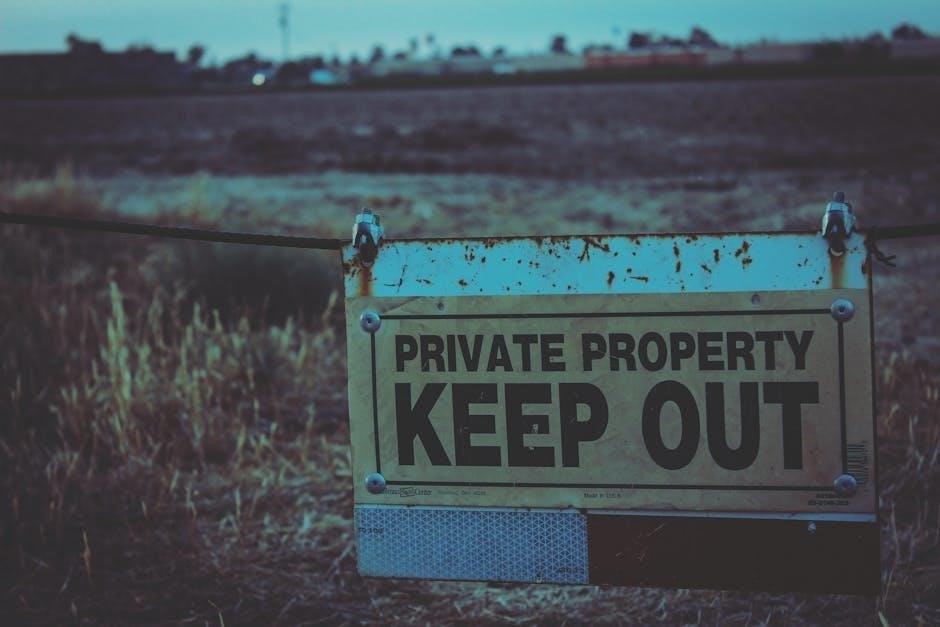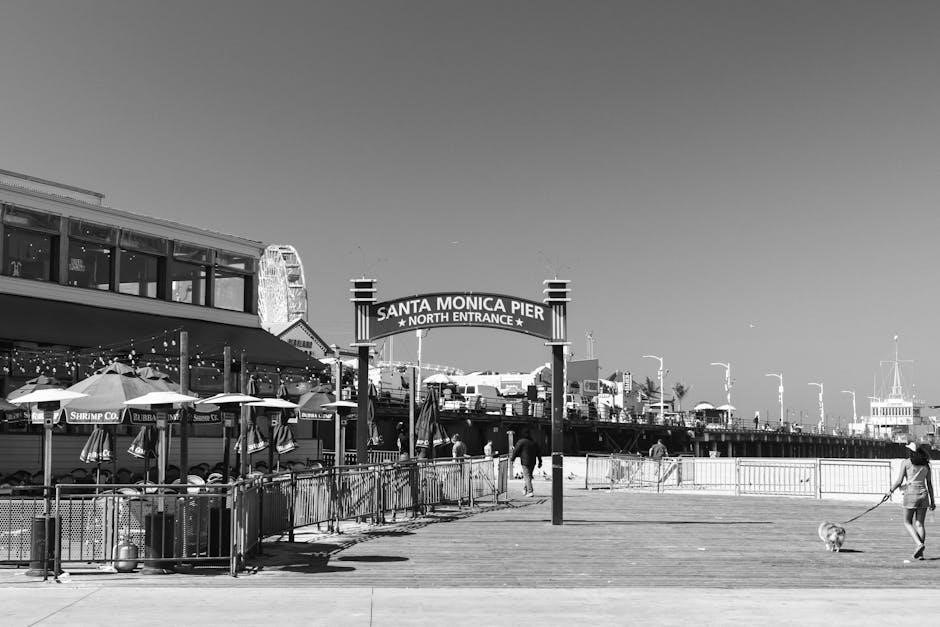The California Preliminary Notice Form is a written notice required by California law, serving as a precursor to Mechanics Liens and Stop Notices, protecting payment rights for contractors and suppliers. It is essential for both private and public projects, ensuring compliance with legal requirements and preventing payment disputes. It is not a lien but a statement of rights.
Overview of the California Preliminary Notice
The California Preliminary Notice is a written notification required by state law, ensuring transparency in construction projects. It informs property owners, contractors, and lenders about potential lien rights for unpaid labor, materials, or services. This notice is not a lien itself but serves as a precursor to legal actions like Mechanics Liens or Stop Notices. It applies to both private and public works projects, with specific forms tailored for each. The notice must be served within 20 days of first furnishing work or materials, outlining the claimant’s rights and responsibilities. Its purpose is to prevent payment disputes and ensure compliance with California Civil Code sections 8100 et seq., 8200 et seq., and 9300 et seq. Properly serving this notice is crucial for maintaining legal rights in construction payment matters.
Importance of the Preliminary Notice in California
The California Preliminary Notice is crucial for safeguarding payment rights in construction projects. It serves as a formal warning to property owners, contractors, and lenders about potential lien rights due to unpaid labor or materials. This notice is not a lien itself but a prerequisite for filing Mechanics Liens or Stop Notices. Its primary purpose is to prevent payment disputes by ensuring all parties are aware of potential claims early on. Compliance with this notice is mandatory under California law, specifically Civil Code sections 8100 et seq., 8200 et seq., and 9300 et seq. Failure to serve the notice within the required timeframe can result in the loss of lien rights, making it difficult to recover unpaid amounts. Additionally, it facilitates transparency and accountability, ensuring that contractors and suppliers can assert their rights effectively. The notice must be served within 20 days of first furnishing work or materials, highlighting its time-sensitive nature. Overall, the Preliminary Notice plays a pivotal role in maintaining legal compliance and protecting stakeholders’ financial interests in California construction projects.

Legal Requirements for the Preliminary Notice
The California Preliminary Notice must be served within 20 days of first furnishing work or materials, as mandated by Civil Code sections 8100 et seq., 8200 et seq., and 9300 et seq.
California Civil Code Sections Governing the Preliminary Notice
The California Preliminary Notice is governed by Civil Code sections 8100 et seq., 8200 et seq., and 9300 et seq. These sections outline the legal requirements for serving the notice, ensuring compliance with state law. Section 8102 specifically addresses preliminary notices for private works, while section 9303 pertains to public works. The notice must be served within 20 days of first furnishing labor, materials, or services. Failure to comply can result in loss of lien rights, as stated in section 8202. The form is not a lien but a statement of rights.
Timeframe for Serving the Preliminary Notice
The California Preliminary Notice must be served within 20 days of first furnishing labor, materials, or services. This strict deadline ensures compliance with state law and protects payment rights. Failure to meet this timeframe can result in the loss of lien rights. The notice is not a lien itself but a required step to preserve future remedies. Timely service is critical to maintaining legal protections for contractors and suppliers in both private and public projects.
Who Needs to Use the Preliminary Notice Form?
The California Preliminary Notice Form is required for contractors, subcontractors, and suppliers involved in construction projects. It is crucial for preserving lien rights and ensuring compliance with state laws.
Contractors and Subcontractors
Contractors and subcontractors must serve the California Preliminary Notice to protect their payment rights. This includes all parties providing labor, materials, or services. Timely submission ensures compliance with Civil Code sections, preserving the ability to file liens if payments are withheld. Proper documentation and adherence to deadlines are critical for maintaining legal recourse. Failure to serve the notice can result in forfeited rights, emphasizing its importance in project transactions.
Suppliers and Material Providers
Suppliers and material providers are also required to serve the California Preliminary Notice to safeguard their rights. This includes firms providing materials or equipment for projects. The notice ensures they are included in payment protections under California law. It must be served within 20 days of the first delivery to maintain eligibility for further legal actions if payments are delayed or withheld. Compliance is essential for securing financial interests in both private and public projects statewide.
Private vs. Public Works Preliminary Notices
California Preliminary Notices differ for private and public works, with specific forms and requirements under Civil Code sections 8200 and 3097. Private notices protect suppliers and contractors, while public notices follow stricter guidelines to ensure transparency in government projects. Both serve to notify property owners, lenders, and contractors of potential lien rights, ensuring payment protections statewide.
Differences in Requirements for Private and Public Projects

California Preliminary Notices for private and public works differ significantly. Private projects require notices under Civil Code section 8200, focusing on payment protections for contractors and suppliers. Public projects, governed by section 3097, involve stricter guidelines to ensure transparency in government-funded constructions. Separate forms are recommended for each to avoid confusion and ensure compliance. Using the wrong form can lead to legal issues, emphasizing the importance of understanding these distinctions to maintain proper documentation and avoid payment disputes.
Recommended Practices for Serving Notices
Best practices include serving the Preliminary Notice promptly, ideally within the required 20-day window, to safeguard payment rights. Use certified mail with return receipt for proof of delivery, ensuring compliance with California Civil Code. Maintain detailed records, including copies of the notice and delivery confirmation. Clarity and accuracy in the notice are crucial to avoid disputes. Consulting legal professionals can help ensure proper execution and adherence to state-specific requirements, minimizing risks and ensuring all parties are informed of their rights and obligations.
How to Serve the Preliminary Notice
Serve the Preliminary Notice via certified mail with return receipt for proof of delivery. Ensure proper documentation and maintain records for compliance and payment protection.
Methods of Delivery
The California Preliminary Notice must be served via certified mail with a return receipt or through personal delivery to ensure proof of delivery. Electronic delivery, such as email, may also be acceptable if explicitly agreed upon by all parties. Proper documentation of the delivery method is crucial for compliance. Maintaining records of successful delivery is essential to uphold legal rights and avoid disputes. Ensuring timely and correct service is vital for protecting payment rights under California law.
Parties to Be Notified
The California Preliminary Notice must be served to the property owner, general contractor, and construction lender, if applicable. For private works, the notice is typically sent to the property owner and the general contractor. In public works projects, the awarding body or construction lender may also need to be notified. Subcontractors and suppliers must serve the notice to the general contractor or the party responsible for payment. Failure to notify all required parties may result in the loss of lien rights, emphasizing the importance of proper service.
Consequences of Not Serving the Preliminary Notice
Failing to serve the Preliminary Notice may result in the loss of lien rights, limiting your ability to recover payment for labor, materials, or services provided.
Impact on Lien Rights
Failing to serve the Preliminary Notice can result in the loss of lien rights, preventing contractors and suppliers from filing a Mechanics Lien to secure payment. Without this notice, parties cannot enforce payment claims through liens, even if they are owed money for labor, materials, or services. The California Civil Code explicitly requires the notice to be served within 20 days of first furnishing work or materials. Missing this deadline can bar claimants from pursuing legal remedies to recover unpaid amounts, leaving them vulnerable to non-payment.
Legal and Financial Implications
Failure to serve the California Preliminary Notice can lead to severe legal and financial consequences, including the inability to file a Mechanics Lien, which is crucial for securing payment for labor, materials, or services. Without this notice, contractors and suppliers may lose their leverage to recover unpaid debts, potentially leading to financial losses. Additionally, non-compliance can result in legal penalties and undermine a party’s position in payment disputes. The notice must be served within 20 days of first furnishing work or materials to maintain lien rights and avoid these repercussions.

Structure of the California Preliminary Notice Form
The California Preliminary Notice Form includes essential details such as project information, party details, work description, and legal references, ensuring compliance with state requirements and clear communication of rights.
Required Information and Details

The California Preliminary Notice Form must include specific details to ensure compliance. It requires the owner’s name, property description, contractor’s information, and a clear description of the work performed, materials provided, and services rendered. The form should also outline payment terms and reference applicable California Civil Code sections. It is crucial to note that this form is not a lien but serves as a formal notice of potential lien rights.

Formatting and Compliance Standards
The California Preliminary Notice Form must adhere to specific formatting standards to ensure legal validity. It should be typed or printed in clear, legible font and include proper margins. The form must be filled out accurately, with all required fields completed. Compliance with California Civil Code sections is essential, and the notice must be served within the mandated 20-day timeframe. Proper formatting ensures the document is enforceable and meets all legal requirements for protecting payment rights.

Downloading and Editing the Preliminary Notice PDF
The California Preliminary Notice Form is downloadable as a fillable PDF, curated by legal and payment experts, ensuring compliance and ease of use for contractors and suppliers.

Where to Find the Official Form
The official California Preliminary Notice Form can be found on legal websites, construction associations, or government portals. It is available for free download as a fillable PDF, ensuring easy access for contractors and suppliers. The form is curated by legal experts to meet California Civil Code requirements, providing a reliable template for private and public projects. Ensure authenticity by sourcing from reputable platforms to avoid legal issues.

Tools for Filling Out the Form Electronically
Several tools simplify filling out the California Preliminary Notice Form electronically. Adobe Acrobat and online PDF editors allow users to fill, sign, and save the form digitally. Cloud-based platforms enable easy sharing and storage. Additionally, specialized construction software offers templates and automated fields to streamline the process. These tools ensure accuracy, efficiency, and compliance with legal requirements, making it easier to manage and submit the form effectively.

Final Considerations and Best Practices
Ensure compliance by accurately completing the form and maintaining detailed records. Best practices include timely delivery and verifying recipient acknowledgment to avoid potential disputes or penalties.
Ensuring Compliance with California Law
To ensure compliance with California law, the Preliminary Notice must be accurately completed and served within 20 days of first furnishing labor or materials. Adherence to California Civil Code sections, such as 8100 et seq. and 8200 et seq., is critical. Proper formatting, including all required details like project description and payment terms, is essential. Timely delivery to all specified parties, such as property owners and lenders, is mandatory. Record-keeping is vital to verify compliance and avoid legal disputes or penalties.
Importance of Record-Keeping
Accurate record-keeping is crucial for compliance and protection under California law. Maintaining copies of the Preliminary Notice, proof of delivery, and project documentation ensures traceability. Proper records help prevent disputes and demonstrate adherence to legal requirements. Secure storage of all related documents, including the filled-out PDF form, is essential for audit purposes and potential legal actions. This practice safeguards rights and provides a clear audit trail, minimizing risks of non-compliance and associated penalties.